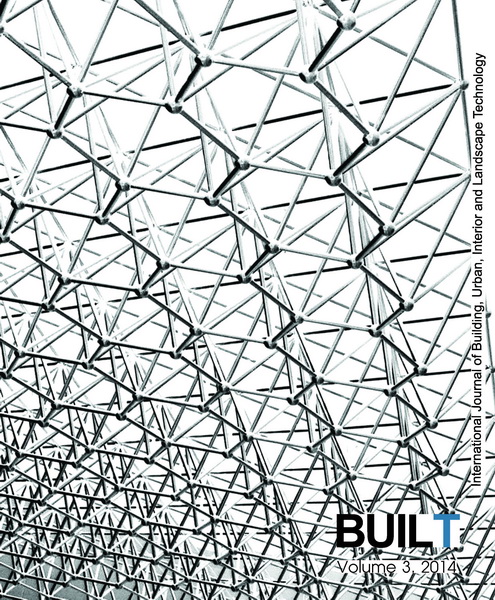An Investigation of the Impact of Building Entrance Vestibule on Indoor Humidity Using A Calibrated Multi-Zone Model for A Small Supermarket in Hot and Humid Climate
Keywords:
Humidity control, Multi-zone model, Automatic entrance door, Calibration, Entrance vestibuleAbstract
The automatically operating entrance doors in many retail buildings have been found to be main paths of air infiltration and this uncontrolled airflow through the automatic entrance doors is a significant factor of indoor moisture problems. This study proposes the calibration method to numerically investigate realistic transient indoor humidity ratios via a calibrated multi-zone model. The calibrated results is used to further calculate the amount of moisture contents transported through the automatic entrance doors with and without a vestibule in a retail building located in a hot and humid climate. The results from the calibrated model coupled with an updating adsorption mechanism agreed well with the measured humidity ratios. The indoor humidity ratio was decreased by approximately 9 percent when a door vestibule was added. The door vestibule can control indoor humidity levels within thermal comfort condition. Future studies should acquire more accurate number of occupants to reduce the uncertainty from the calculation of indoor moisture source.
Downloads
References
Abe, K. (1993). A method for numerical characterization of indoor climates by a biosensor a xerophilic fungus.Indoor Air, 3(3), 344-348.
Arundel, A. V., Sterling, E. M., Biggin, J. H. & Sterling, T. D. (1986). Indirect health effects of relative humidity in indoor environments. Environmental Health Perspec- tives, 65, 351–361.
American Society of Heating, Refrigeration and Air Condi- tioning Engineering [ASHRAE].(2004). Thermal environ- mental conditions for human occupancy. ASHRAE Standard 55-2004. Atlanta, GA: Author.
American Society of Heating, Refrigeration and Air Condi- tioning Engineering [ASHRAE]. (2008). Chapter 21 humidifiers, ASHRAE Handbook: HVAC systems and equipment (I-P), p. 21.1. Atlanta, GA: Author.
American Society of Heating, Refrigeration and Air Condi- tioning Engineering [ASHRAE].(2010). Ventilation for acceptable indoor air quality. ASHRAE Standard 62.1- 2010. Atlanta, GA: Author.
ASTM International. (2008). Standard Guide for Statistical Evaluation of Indoor Air Quality Models [ASTM D5157- 97]. Retrieved from http://www.astm.org/Standards/D5157.htm.
Axley, J. W. (1991). Adsorption modelling for building con- taminant dispersal analysis. International Journal of Indoor Environment and Health [Indoor Air], 1(2), 147- 171.
Bennett, D.H., Fisk, W., Apte, M.G., Wu, X., Trout, A., Faulkner, D. & Sullivan, D. (2012). Ventilation, tempera- ture, and HVAC characteristics in small and medium commercial buildings in California. International Journal of Indoor Environment and Health [Indoor Air], 22(4), 309–20.
Cho, H., Gowri, K. & Liu, B. (2010). Energy saving impact of ASHRAE 90.1 vestibule requirements: modeling of air infiltration through door openings. A report for the U.S. Department of Energy PNNL-20026. Pacific Northwest National Laboratory, Retrieved from http://www.osti.gov/bridge/servlets/purl/1017117-phV5aG/.
Clarke, J. A., Johnstone, C. M., Kelly, N. J., McLean, R. C., Anderson, J. A., Rowan, N. J. & Smith, J. E. (1999). A Technique for the prediction of the conditions leading to mould Growth in Buildings. Building and Environment, 34, 515–21.
Emmerich, S. J., Persily, A. K. & Nabinger, S. J. (2002). Modeling moisture in residential building with a multi- zone IAQ program. Pro-ceedings of Indoor Air 2002, 9th International conference on Indoor Air Quality and Climate in Monterey, June 30 - July 5 2002. California: National Institute of Standards and Technology.
Jareemit, D. (2014). A semi-empirical investigation of transient ventilation rates in retail stores (Ph.D. Thesis). Pennsylvania State University. Retrieved from https://etda.libraries.psu.edu/paper/21196/
Jing, S., Li, B., Tan, M. & Liu, H. (2012). Impact of Relative Humidity on Thermal Comfort in a Warm Environment. Indoor and Built Environment, 22, 598–607.
Kohri, K. (2001). A simulation analysis of the opening of entrance doors and winter airflow into the entrance hall of a high-rise office building. Building Simulation; Seventh International IBPSA Conference, August 13-15, 2001 (pp. 1017-1022). Rio de Janeiro: Brazil.
Kramer, M. A. & Karagiozis, A. N. (2004). A new look at residential interior environmental loads. Proceedings of performance of exterior envelopers of whole buildings IX. Atlanta: ASHRAE.
Persily, A. K. & Ivy, E. M. (2001). Input data for multizone airflow and IAQ analysis. Gaithersburg, Md: National Institute of Standards and Technology [NISTIR].
Siegel, J.A., Srebric, J., Crain, N., Nirlo, E., Zaatari, M., Hoisington, A., Shu, S., Jareemit, D. & Kim, Y.S. (2013). ASHRAE research project 1596-RP: Ventilation and indoor air quality in retail stores. Report No. RP1596. Atlanta, GA: ASHRAE.
Simpson, A. M. (1936). Infiltration Characteristics of Entrance Doors. Refrigerating Engineering, 31(6), 345–50.
Srisuwan, P. & Varodompun, J. (2013). Field CO2 monitoring of rooms with differnt air-tightness classes and ventilation system. International Journal of Building, Urban, Interior and Landscape Technology, 2, 5-20.
Sterling, E. M., Arundel, A. & Sterling, T. D. (1985). Criteria for human exposure to humidity in occupied buildings. ASHRAE Transactions, 91(1), 611–622.
Walton, G. N. & Dols, W. S. (2005). CONTAM user guide and program documentation. Gaithersburg, MD: National Institute of Standards and Technology.
Yuill, G. K., Upham, R. & Hui, C. (2000). Air leakage through automatic doors. ASHRAE Transactions, 106(2), 145–60.
Downloads
Published
How to Cite
Issue
Section
License

This work is licensed under a Creative Commons Attribution-NonCommercial-NoDerivatives 4.0 International License.












